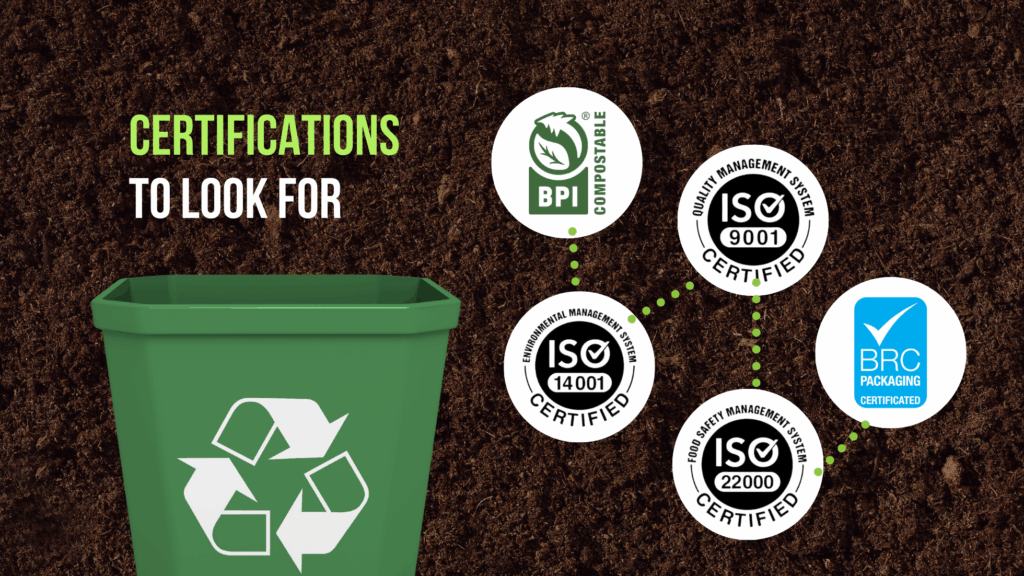Bagasse is a fully compostable material made from sugarcane fibre, a byproduct of sugar production. It’s an eco-friendly alternative to plastic and paper-based packaging, commonly used for cups, containers, and trays. Bagasse not only reduces waste but also supports a circular economy by turning agricultural byproducts into useful products.
Quick Bagasse Facts:
Source: Upcycled sugarcane fibre (a rapidly renewable agricultural byproduct).
- Disposal: Fully certified compostable; breaks down in industrial facilities in weeks.
- Performance: Naturally strong, rigid, and resistant to heat (up to 450∘F) and grease.
Primary Use: Replacing single-use plastic and Styrofoam foodservice containers and tableware.
What is Bagasse?
Bagasse, also known as sugarcane pulp, is the dry, fibrous residue left after sugarcane stalks are processed for juice or sugar. Instead of being discarded, this versatile byproduct can be used in a variety of applications, from bioenergy to paper products, and is usually transformed into sturdy, biodegradable food packaging.
Key benefits of bagasse packaging:
- Sustainable: Uses the fibrous leftovers of fast-growing sugarcane, repurposing what would be waste into durable, eco-friendly packaging, reducing the need to rely on virgin raw materials.
- High performance: Strong, rigid, and naturally resistant to heat and grease, making it ideal for foodservice needs.
- Eco-friendly: Fully certified compostable, helping close the loop by returning nutrients to the soil through industrial composting.

How is Bagasse Packaging Made?
The manufacturing process for bagasse packaging transforms a waste product into a finished, durable item using simple, low-impact steps:
- Pulping: The raw bagasse fibres are washed and treated to remove residual sugar and impurities. They’re then mixed with water to create a wet slurry, or pulp, similar to how paper is made.
- Molding & Pressing: The bagasse slurry is hydraulically pressed and molded using high heat and pressure to create the desired shape, whether it’s a plate, bowl, or a clamshell container. This high-pressure forming process gives the final product its rigidity, smooth finish, and strength.
- Drying & Trimming: Once molded, the products are dried, trimmed, and quality-checked to ensure every piece is smooth, durable, and ready for use.
- Optional Coatings: Some bagasse products may require a thin, certified compostable moisture barrier coating. This coating is typically plant-based, ensuring that the final product maintains its full compostability.

Environmental Benefits of Bagasse
Bagasse has a much lighter environmental footprint than both plastic and traditional paper packaging. It’s made from the fibrous byproduct of sugarcane — a fast-growing, renewable crop harvested several times a year, avoiding the long wait times required for trees used in paper production. Instead of letting this leftover material go to waste, it’s repurposed into durable, compostable packaging that replaces single-use plastics and paper.
Using bagasse instead of plastic or virgin paper reduces energy use, cuts CO₂ emissions, and keeps agricultural waste out of landfills or incinerators. Plus, bagasse packaging fully composts in industrial facilities within 60–90 days, returning nutrients to the soil instead of lingering for centuries like plastic.
Environmental advantages at a glance:
- Renewable resource: Sugarcane regrows annually, unlike trees, reducing the strain on forests and fewer greenhouse gas emissions tied to deforestation.
- Lower carbon footprint: Reuses leftover fibre and requires less energy than producing plastic or virgin paper as no new crops or fossil fuels are needed.
- Waste diversion: Keeps sugarcane residue out of landfills and avoids burning that releases CO₂ and particulates into the air.
- Fully compostable: Breaks down in industrial composting facilities in weeks, returning nutrients to the soil.

Why Bagasse Is a Better Alternative for Food Packaging and Tableware
Bagasse offers a smarter, more sustainable alternative to plastic, Styrofoam, or traditional paper products. Made from the fibrous residue left after sugarcane juice extraction, it turns agricultural byproducts into durable, compostable packaging and tableware.
It’s durable, heat- and grease-resistant, and performs just as well as conventional options without the environmental cost. Unlike plastic or Styrofoam, which can take centuries to break down, bagasse decomposes within weeks in composting facilities, returning nutrients to the soil instead of polluting it.
For restaurants, cafés, caterers, and foodservice businesses, that means a more responsible, forward-thinking way to serve food without compromising quality, convenience, or cost-efficiency.

How to Dispose of Bagasse Products in Canada
Bagasse is fully compostable but requires the right conditions to break down efficiently. Here’s how to handle it responsibly:
Certifications to look for:
- BPI Certified Compostable: Shows the product will fully break down in industrial composting facilities within a few months. Look for the BPI logo on packaging. (BPI)
- EN 13432 / TÜV Austria: International standards that confirm packaging is truly compostable, biodegradable, and safe for soil, without leaving harmful residues.
- BNQ (Quebec): Canadian certification ensuring the product meets industrial composting requirements locally.
Regional acceptance:
Bagasse and other certified compostable packaging are accepted differently depending on the province and municipality. Always check your local program before disposal.

The Eco Guardian Difference
Bagasse is the sustainable packaging solution that requires zero compromise on quality. It delivers the strength, versatility, and environmental compliance required for all modern applications, from home gatherings to high-volume foodservice.
When choosing compostable packaging, you need a partner whose standards are verifiable and whose supply is reliable. That is the Eco Guardian difference:
- Guaranteed Performance: Our products are engineered for reliability, backed by extreme temperature tolerance (−40∘F to 450∘F) and proven resistance to leaks and grease.
- Certified Trust: We remove the guesswork. Our products hold leading third-party environmental certifications, including BPI, ASTM D6400/D6868, and EN 13432, guaranteeing authentic compostability.
- Canadian Accountability: We offer stable supply, specialized expertise in Canadian compliance, and dedicated support for all your packaging needs, regardless of order size.
Make the sustainable choice the easy choice. Explore your options now:
- For Homes, Events, & Small Orders: Shop our compostables here.
- For Wholesale & Foodservice: View our catalog or contact us for custom solutions
